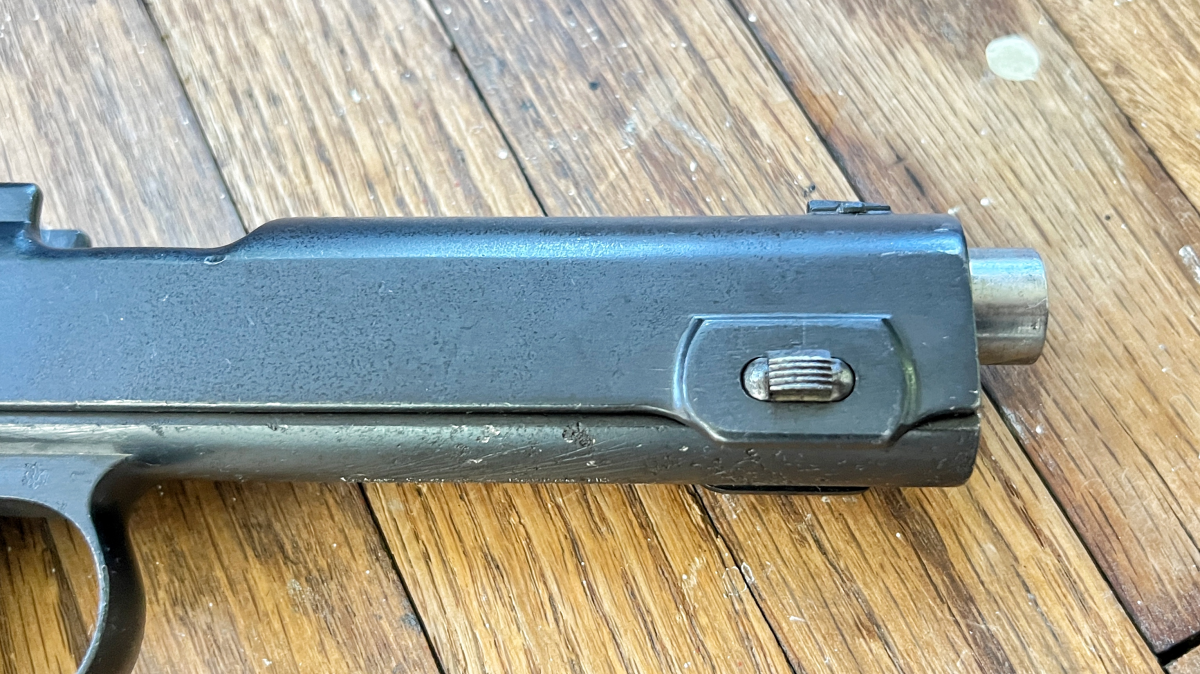Curious Relics #092: Holsters & Stripper Clips – Steyr 1912
Sam.S 06.26.24

Welcome, if you are a newcomer to this fun bi-weekly segment of AllOutdoor.com! The last time around I covered the history and variations of the Steyr 1912, a pistol that was full-on rejected and then later adopted by the Austrian military at the start of World War One. Crusading on we are covering its easy dating, the specifications, and if there are parts and accessories out there. Let’s dive right into the rabbit hole!
Recent Content in Curious Relics:
- Curious Relics #086: Love at First Sight – The Savage 101
- Curious Relics #087: A Pistol Full of Mysteries – The Savage 101 Part II
- Curious Relics #088: Decidedly Difficult Dating – Savage Model 101 Part III
- Curious Relics #089: Single Six Shooter – Savage Model 101 Part IV
- Curious Relics #090: From Zero to Hero – The Steyr M1912
- Curious Relics #091: There is a Full Auto Steyr 1912?
Welcome to our recurring series of “Curious Relics.” Here, we want to share all of our experiences, knowledge, misadventures, and passion for older firearms that one might categorize as a Curio & Relic – any firearm that is at least 50 years old according to the ATF. Hopefully along the way you can garner a greater appreciation for older firearms like we do, and simultaneously you can teach us things as well through sharing your own expertise and thoughts in the Comments. Understanding the firearms of old, their importance, and their development which lead to many of the arms we now cherish today is incredibly fascinating and we hope you enjoy what we have to share, too!
Dating: Steyr 1912
Dating a Steyr 1912 is super easy because they all have their date marked on the left side of the slide. The marking will be at the rear just above the safety. For example, mine is from 1914.
Specifications: Steyr 1912
The Steyr 1912 is a short recoil-twisting barrel-operated pistol. It is fed via a stripper clip that deposits eight rounds of 9×23 Steyr otherwise known as 9mm Steyr. It has unique features like a cartridge ejector, an auto-off safety mechanism, and an easy field strip.
- Years Produced: 1912 to 1945
- Number Manufactured: Up to 300,000
- Operating System: Short Recoil operated, Twisting Barrel
- Chambering: 9x23mm Steyr, 9x19mm Parabellum (conversion)
- Barrel Length: 5 inches
- Overall Length: 8.5 inches
- Weight: 40.2 ounces (1,020 grams)
- Action: Single Action
- Safety: Thumb safety. Auto-off when on safe and hammer is cocked.
- Capacity: 8-round internal box magazine, loaded via stripper clips
- Front Sight: Fixed Triangle Blade
- Rear Sight: Fixed Rear V-notch
- Grip: Wood checkered or serrated (WWII-era replacements)
Aftermarket Parts & Accessories: Steyr 1912
When it comes to aftermarket parts and accessories things get weird. There are not a lot of parts out there. One specific part, for any of you machinists, that often goes missing, needs replacing, and is non-existent, is the slide wedge. Make one, please!
I’ll get off my soap box on the slide wedge. Parts are slim pickings. Some are available on Numrich but next to nothing super useful (they do have stripper clips). eBay and Gunbroker occasionally will have parts lots. A site called genuine-militaria seems to have some but I feel like I saw this a while ago so they may not be updated. I have never bought from that site so use caution. IGB Austria sells both 9mm Steyr barrels and 9×19 barrels. USE CAUTION if you decide to convert your Steyr to use 9×19. I have heard horror stories about the guns not being able to handle it. Lastly, Triple K sells plastic grips which I have on mine currently. They did need quite a bit of hand fitting. One aftermarket part that is unconventional but has been said to work is the recoil spring. This allegedly can be swapped or replaced with a Glock 17 spring from Wolff Gunsprings. Though, some care and troubleshooting may need to be done with the weights.
There is not very much out there for accessories aside from reproduction holsters. If you are looking for the best option I would recommend checking out Sarco Inc where they have a holster that comes with ten stripper clips. I bought mine years ago and the holster is definitely new but the added bonus of the clips is great.
End of Part III: Steyr 1912
The Steyr 1912 remains a fascinating piece of firearms history, with its unique features and role in World War I. While parts and accessories can be challenging to find, dedicated collectors and enthusiasts continue to preserve and maintain these pistols. The ease of dating these firearms, thanks to their clear markings, adds to their appeal for collectors and historians alike. As we conclude this part of the exploration of the Steyr 1912, we’re reminded of the importance of understanding and appreciating these curious relics that have shaped the evolution of modern firearms. Copy
In closing, I hope our Curious Relics segment informed as well as entertained. This all was written in hopes of continued firearm appreciation and preservation. We did not just realize how guns were supposed to look and function. It was a long and tedious process that has shaped the world we live in. So, I put it to you! Is there a firearm out there that you feel does not get much notoriety? What should our next Curious Relics topic cover? As always, let us know all of your thoughts in the Comments below! We always appreciate your feedback.



